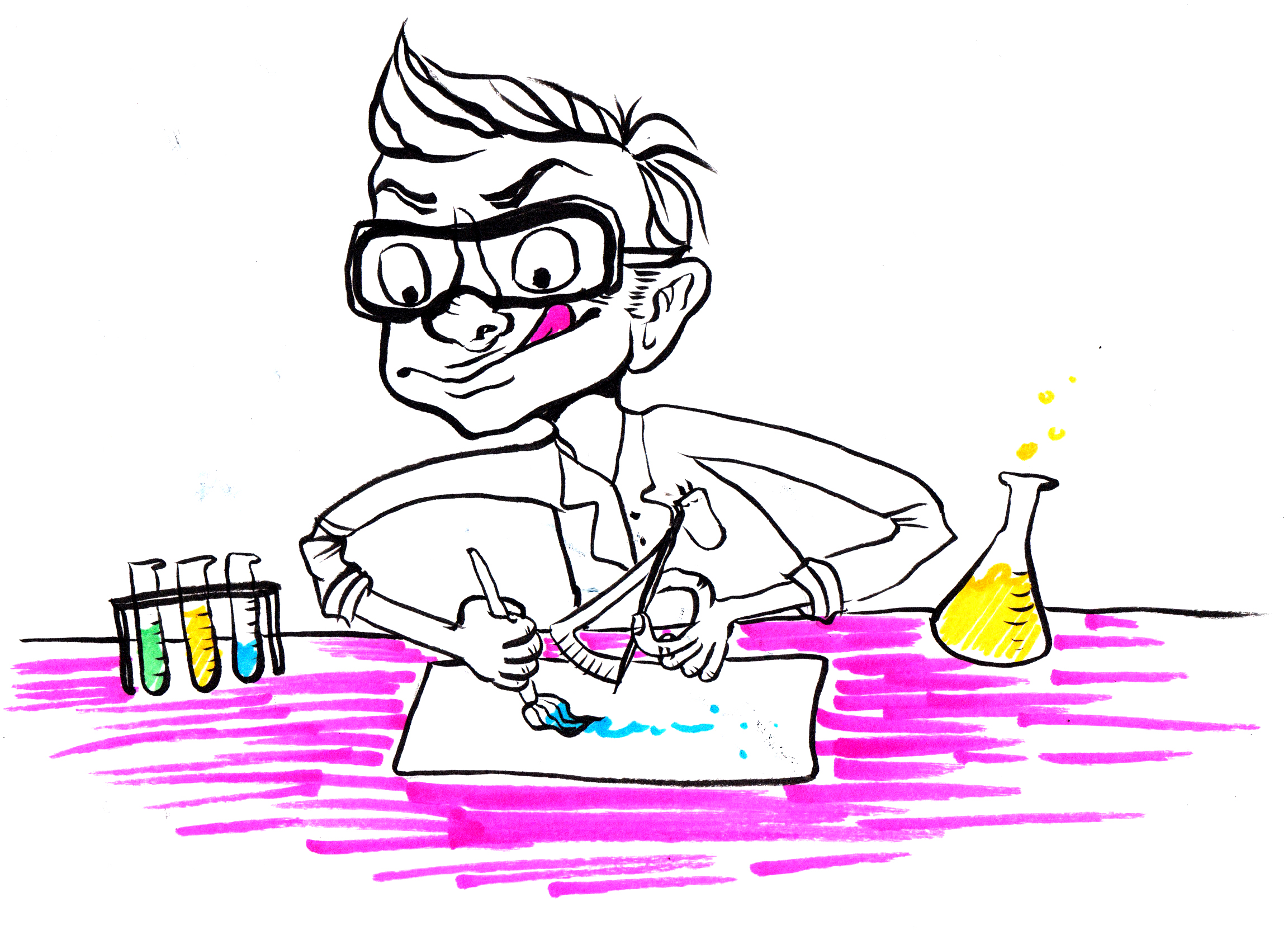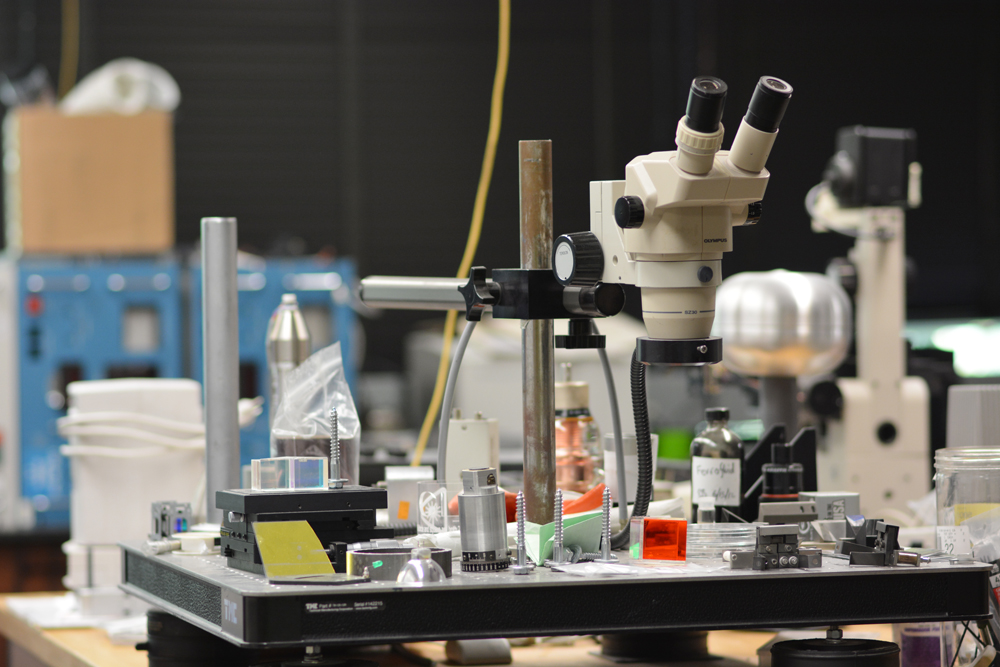Early one morning last March, I walked into a high school science classroom full of teenagers who exuded a palpable air of not giving a shit. It was 7:15 a.m., and they looked like they wanted nothing more than to go home and crawl back into bed. To be honest, I felt the same way. It was my first time teaching with NW Noggin—a neuroscience outreach group made of scientists and artists that integrate art into lesson plans—and I had no idea how we were going to get anything done. Most of the kids were considered academically at risk—students who had fallen behind and were at high risk of dropping out. Getting these kids to pay attention to a lecture would have been impossible.
But we didn’t lecture.
Instead, we introduced ourselves, talked for roughly five minutes about the parts of the brain, told them we had actual human brains they could see, touch and hold, then dispersed among the kids to talk about brains while making art. Over the next four weeks, kids who had been indifferent about science came alive with excitement about neuroscience. Attendance for those classes spiked to the highest it had ever been. Kids who previously disrupted the class became model students, asking questions about research methods and research ethics. Kids even used what they learned to joke around with their friends, saying that they had made a bad decision “because their frontal lobe wasn’t working right.” It was art that made all the difference.
You see, art and science are a perfect match. To Jeff Leake, the artist who co-founded NW Noggin, the biggest similarity is how art and science are approached.
“In both cases, the question that’s being asked is often the most important thing and the impetus for creation,” Leake told me. “Art and science both approach those questions with an open-ended exploration and no particular answer in mind. In some ways, you can think of the creation of art as similar to setting up an experiment. There’s a method or strategy that’s being applied to address and communicate a particular question to others and an attempt to make an idea or concept into something concrete and seen.”
By teaching kids some basic knowledge and then asking them to create something with that knowledge, we give them a chance to work with the material and interpret it for themselves. Arts-integrated learning is not passive. You can’t just sit there and stare into space and hope no one notices the drool on your paper when you fall asleep with your eyes open. You have to actually think about what you’re doing, and thinking about it makes you remember it better.
I saw it in action this summer, while working with a group of NW Noggin volunteers who taught a class for middle school kids. We taught the kids about how our brains control our bodies by sending signals along nerves that go throughout our bodies, and how our bodies send signals to our brains in the same way. We then had the kids build paper monsters out of card stock and connect those pieces with metal brads. We asked them to think about what their paper monster does, how it moves, how it senses and how their nervous system would have to be arranged to let it do these things.
The results were awesome. One kid made “the destroyer of worlds” from his favorite video game. The monster breaks apart into pieces as it attacks, he told us, so he needed to draw in brains for each piece of the monster. Another kid made a video game boss and chose to not put any nerves in its claw “because then it would feel pain and stop attacking, and the monster never stops attacking in the game.” The kids weren’t just repeating what we said back to us. They showed us that they understood the material by their creations.
I’m not the only one who has seen this effect. Dr. Mariale Hardiman, the vice dean of academic affairs and director of the neuro-education initiative of the Johns Hopkins School of Education, conducted a study to see how learning from arts-integrated teaching differed from learning from conventional teaching. Would the students learn more? Would they retain their knowledge longer? What about the students who were already behind, would they be able to catch up?
It turns out that the answer is yes. Students who were taught astronomy or ecology with arts integration remembered more of what they had learned when tested on it two months later. The effect was strongest for kids who had the lowest reading comprehension scores, which makes sense. If you’re struggling with reading comprehension, learning about complex stuff from a textbook is going to be much harder. But what if your teacher has your class get up and act out how atoms act in a solid, liquid or gaseous state, rather than just read about it? You’re going to remember the time the entire class was careening around the room pretending to be gas molecules much better than the time a teacher told you gas molecules move around big spaces very fast.
This kind of learning is especially important in science, technology, engineering and math—STEM fields. STEM material is often abstract and not at all intuitive. STEM material is the stuff that stymies us with its complexity. That complexity is not a bad thing, though. If anything, it’s the most beautiful part of STEM. But giving kids a giant block of text to read and then asking them to fill in the correct bubble on a standardized test does not allow them to explore that complexity and find joy in all the things they can make from it. Adding arts into our STEM education—turning STEM into STEAM—allows for the innovation and exploration that is desperately needed in those fields. At a time when our nation’s math and science performance has fallen so low compared to other nations, it’s time to rethink our approach to teaching STEM.







“Adding arts into our STEM education—turning STEM into STEAM—allows for the innovation and exploration that is desperately needed in those fields. At a time when our nation’s math and science performance has fallen so low compared to other nations, it’s time to rethink our approach to teaching STEM.”
but innovation and exploration don’t come from kids doodling video game characters with a comprehension of neuroscience something like what you’d get from reading the first paragraph of its wiki page.
STEAM Education agrees that turning STEM into STEAM allows for the innovation and exploration of all students. We are an international professional development consulting company which was founded by Georgette Yakman in 2006 when she developed the STEAM framework which includes a way for all the subjects to relate to each other and to a rapidly changing world for developing reality-based life-long learning skills called ‘FUNctional Literacy for All.’ We emphasize learning and using the idea that “Science and Technology are interpreted through Engineering and the (social, language, physical, musical and fine) Arts, all based in elements of Mathematics.” Since our founding, we have trained over 1800 educators from 34 states and 10 foreign countries on our research-backed PBL-styled STEAM Education implementation practices. Georgette Yakman has been a leading force in the STEAM movement and has been a highly requested speaker for keynotes and conferences both nationally and internationally.
We believe that the A in STEAM stands for the broad spectrum of the arts going well beyond aesthetics; it includes the liberal arts, formally folding in Language Arts, Social Studies, Physical Arts, Fine Arts & Music that each shape developments in STEM fields. Students like STEAM lessons because they are almost always investigating things that matter to them. An average lesson starts with giving the students a reason to be interested in the topic by showing them the social studies connection, then students research things to learn the content they need to know to gather and analyze data, then they plan and build something, correct it, analyze it and report on it. We are finding that this framework help students to become FUNctionally Literate, meaning they understand the basics of what the benchmarks outline in each subject area AND are able to understand the context of when and how to apply each to be responsible members of society.
I LOVE this article! I taught middle school science for 28 years and starting my first year, the ARTS were a part of my science class – and that was before the acronyms STEM or STEAM! I had an incredible career as a science teacher, so much so, that I continue to be involved by presenting science professional development. I am still preaching “Full STEAM ahead” with wearable projects that incorporate art and science. Along with the benefits of having a project that doesn’t end up in the trash after it is graded, the students share their knowledge of science EVERY TIME they were the project in their community! http://sciencewear.net/index.html